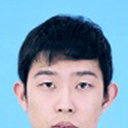[Recurrent pulmonary infection and oral mucosal ulcer].
Cuvinte cheie
Abstract
An 8-year-old girl who had experienced intermittent cough and fever over a 3 year period, was admitted after experiencing a recurrence for one month. One year ago the patient experienced a recurrent oral mucosal ulcer. Physical examination showed vitiligo in the skin of the upper right back. Routine blood tests and immune function tests performed in other hospitals had shown normal results. Multiple lung CT scans showed pulmonary infection. The patient had recurrent fever and cough and persistent presence of some lesions after anti-infective therapy. The antitubercular therapy was ineffective. Routine blood tests after admission showed agranulocytosis. Gene detection was performed and she was diagnosed with dyskeratosis congenita caused by homozygous mutation in RTEL1. Patients with dyskeratosis congenita with RTEL1 gene mutation tend to develop pulmonary complications. Since RTEL1 gene sequence is highly variable with many mutation sites and patterns and can be inherited via autosomal dominant or recessive inheritance, this disease often has various clinical manifestations, which may lead to missed diagnosis or misdiagnosis. For children with unexplained recurrent pulmonary infection, examinations of the oral cavity, skin, and nails and toes should be taken and routine blood tests should be performed to exclude dyskeratosis congenita. There are no specific therapies for dyskeratosis congenita at present, and when bone marrow failure and pulmonary failure occur, hematopoietic stem cell transplantation and lung transplantation are the only therapies. Androgen and its derivatives are effective in some patients. Drugs targeting the telomere may be promising for patients with dyskeratosis congenita.



